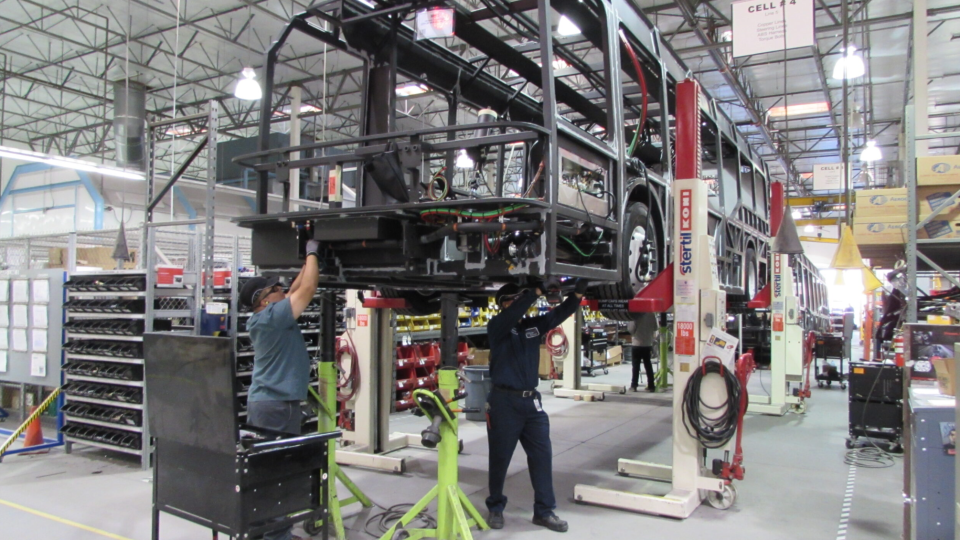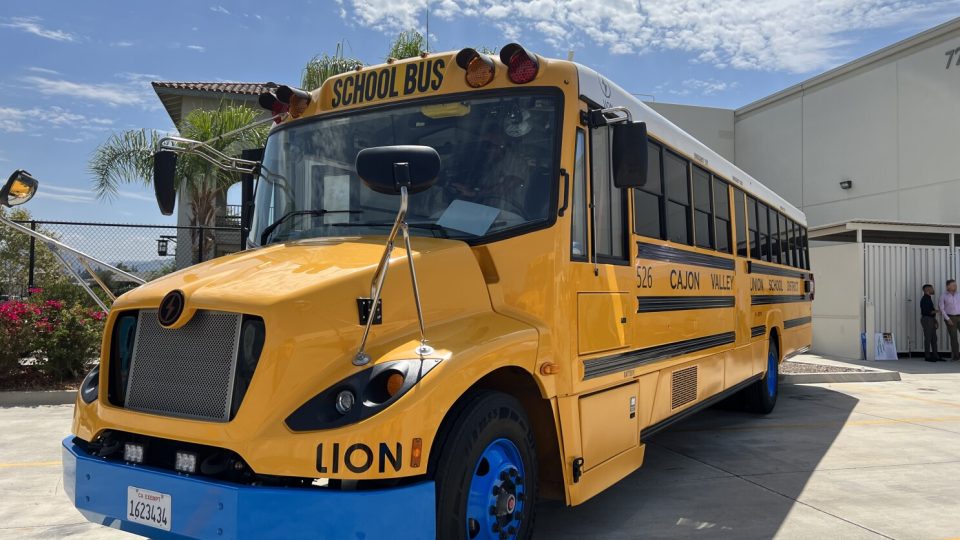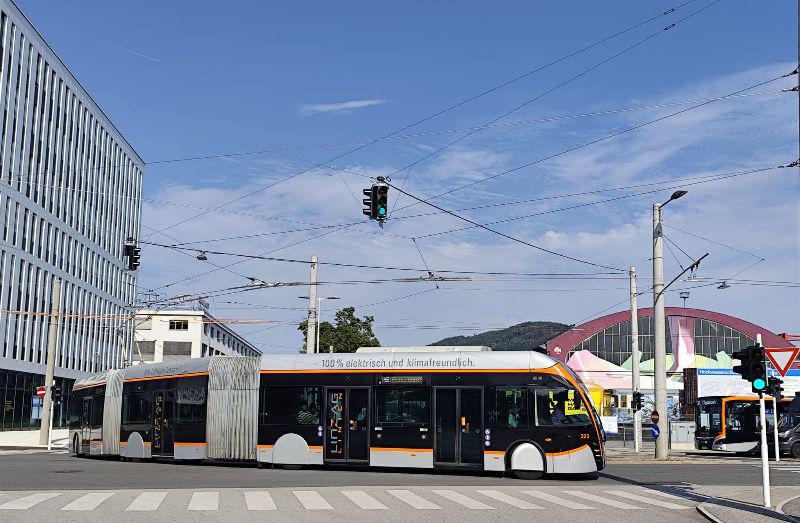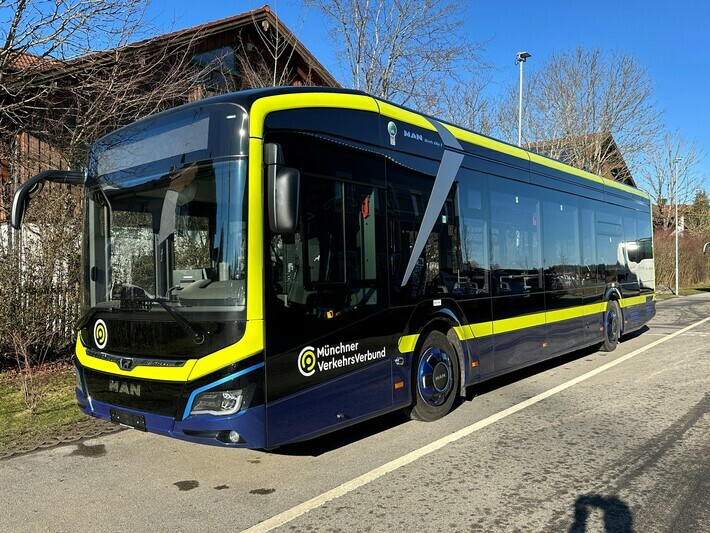The future city bus according to Daimler. Figure it out!
“The bus users’ wishes will play a much more decisive part than previously in the development of the Future City Bus,” says Dr. Ahmet Demircioglu, a futurologist at Daimler. In the year 2030, “classic” city buses will no longer be the only ones on the road. Electric buses are bound to conquer the urban public […]
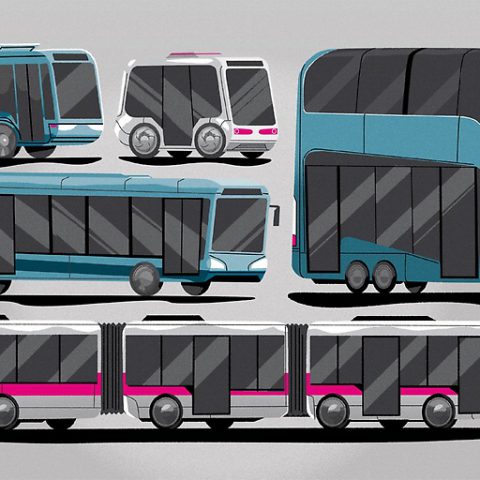
“The bus users’ wishes will play a much more decisive part than previously in the development of the Future City Bus,” says Dr. Ahmet Demircioglu, a futurologist at Daimler. In the year 2030, “classic” city buses will no longer be the only ones on the road.
Electric buses are bound to conquer the urban public transport market. But not in the shape to which we are accustomed, derived from the layout of diesel buses. Electric buses designed for electric drive will provide more internal space and larger low-floor. According to Daimler, there will be at least four different basic types in various forms. Following, we quote in full the paper issued by Daimler (text by Ernesto Singer).
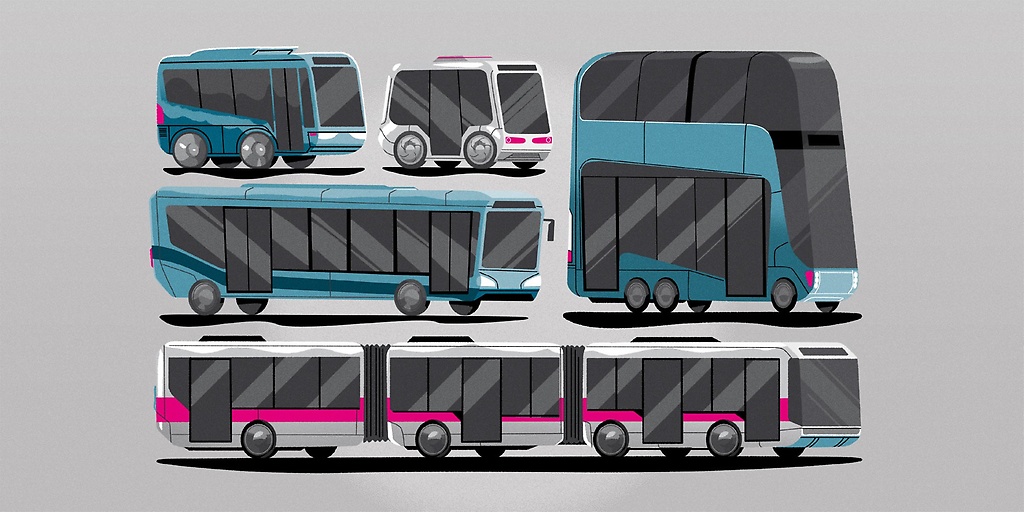
The shuttle bus: driverless and bright
This type of bus mostly operates in the suburban environment and carries its passengers to central transport nodes. It is completely driven by electricity and has between ten and 26 seats; it drives autonomously and does not have a driver on board. Its speed is limited to 30 km/h. A 360° monitoring camera transmits live images of the bus interior to the control center on request. The passengers can contact a service employee via videophone at any time. A clearly visible emergency button and special safety features such as geofencing — which only permits the satellite-monitored shuttle bus to travel along specified routes — increase the perceived safety on board.
The access doors at the side open wide, and an automatic ramp enables access for wheelchair users and small robot vehicles. The interior is bright, thanks to large windows that also serve as displays for augmented reality applications. The vehicle is versatile in use, and the interior can be configured in different ways. Depending on its specifications, the vehicle can be converted to carry goods, for example, and thus can be used to transport packages through the city at night.
The midibus: flexible and autonomous just in depot
The midibus will also be powered exclusively by electricity. It’s smaller than the standard city bus and increases transport operators’ flexibility. It will mainly be used outside peak hours or in suburbs as a feeder for more heavily used transport corridors. The drivers will be supported by numerous assistance systems — and thus will be relieved of stress. Getting on and off the bus via the two side doors will be stress-free, and a ramp will ensure barrier-free accessibility. A clearly visible projection on one of the windows will display information and the number of free seats.
The intensity of the air conditioning at each seat can be individually controlled, and a lighting concept with different zones creates a pleasant atmosphere. Specific seats which will shortly have to be freed for passengers with small children, for example, can be indicated on a display system.
When required, the midibus can maneuver around the bus depot completely automatically, so it doesn’t need a driver to take it to charging or washing stations. This substantially reduces the operating costs.
The standard bus recognizes the wheelchairs
This type of bus comes closest in form to the classic city bus. Of course its design is more modern and its interior is lighter, more comfortable, and more spacious. The seats can be arranged in various zones as required, for example in a zone for work, for people with physical disabilities or for families. It’s better-prepared for the demographic change than the buses currently in operation. For example, getting on and off this city bus is no longer a problem. It automatically recognizes whether a wheelchair user wishes to board and autonomously ensures a smooth transfer of the passenger into the vehicle.
Also robots will board on the standard bus
The new city bus will also carry robots as passengers. These will use the flexible network of bus stops to transport packages even to remote parts of the city. And because increasing numbers of people are using bicycles for part of their journey, the new city bus will also be equipped with a bike stand. The bus will normally be fitted with a purely electric drive system. For hilly cities, there will also be an optional diesel or diesel hybrid drive train. The standard bus will be available in high-floor or low-floor versions. The driver is supported by numerous assistance systems and can be informed of construction work or other traffic problems via augmented reality functions. His or her new tasks include monitoring the largely automated bus driving and providing passenger services.
The high-capacity bus, electric or hybrid
These buses are either very long or have two decks in order to carry as many passengers as possible through the city. This will be unchanged in the future. Both, the bi-articulated bus with five to seven doors and the double-decker bus with three doors will be part of the scene in the cities of tomorrow. High-capacity buses are flexible in operation and capable of transporting large numbers of people within extended metropolitan areas.
Depending on the driving profile, these largest members of the city bus family can be powered purely electrically or as diesel hybrids. An extremely precise navigation system supports the driver in pulling up exactly alongside the bus platforms. The central display in the cockpit can also present gamification content that guides the driver playfully to a comfortable driving style, including a special reward for especially thoughtful and environmentally conscious drivers.
The interior is designed to be highly flexible. For example, a special area of the bus can be reserved for the transport of goods, if required. Optional anti-vandalism functions such as anti-graffiti coatings, changeable covers for the seat cushions and audiovisual warning notices make sure that the buses keep their high-quality look, both inside and out.



